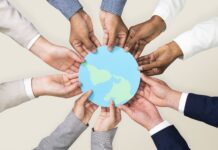
San Francisco received flack in recent years for issues with homelessness; however, it still saw about 26.1 million visitors last year, a 2.4 percent increase from 2017. One key reason may be the programs and partnerships between community hospitality leaders who join forces to make changes in their neighborhoods.
There are three key programs already doing just that. The Conquering Homelessness Through Employment in Food Services (CHEFS) program offers a five-month culinary training program to help homeless or low-income individuals learn the skills they need to enter the food service industry. Another partnership between the Hilton and nonprofit Tenderloin Community District is helping beautify the streets of the notoriously problematic Tenderloin neighborhood, turning it into a destination with new restaurants, coffee shops and bars for meeting-goers to frequent.
And last but not least, the Hotel/Non-Profit Collaborative led by Jo Licata, community projects manager at the Hilton San Francisco Union Square, is a program that transfers excess goods and supplies from popular convention hotels to nonprofit agencies in the city. We spoke with Licata about the program and how it’s benefiting the San Francisco community.
How exactly has the Hotel/Non-Profit Collaborative played a role in stabilizing the downtown neighborhoods in San Francisco?
The purpose of the Hotel/Non-Profit collaborative is to ensure that excess hotel and building supplies, and equipment are directed to area non-profit community programs who are aiding the underserved and at-risk population. Clients affected are shelter residents, veterans seeking services, at-risk families and youth, victims of abuse and domestic violence. What we can help these services obtain are furnishings, household goods and supplies, hygiene and linen supplies to be used by their clients in their living and common spaces. One specific instance of how this program is helping is the donation of partial rolls of toilet paper from large office complexes that are being donated to shelters. People don’t realize that shelters have to buy human necessities as well as pay for program costs. One of the recipient organizations explained that the donation of hundreds of partial rolls each month allowed them to use those funds to hire another service aide.
How exactly are supplies transferred from area hotels?
When a property has excess goods and supplies, I am notified of what is available and when it may be picked up. For example, 100 towels and blankets may be available for donation. I then notify a number of agencies I know who are in need of such items. (I regularly work with about 30 or 40 groups, from very large shelter services of thousands of rooms to small agencies with perhaps 15 rooms.) When I have an agency agreement to pick up the material, I connect the agency with the property and the logistics are arranged by those parties. What and how often varies depending on what activities, such as remodels or purchasing of new items or new branding of items, is going on at a specific property. Just in the last month, I have helped three or four agencies receive over 15 large laundry carts of towels, sheets and pillow cases.
Sometimes, a hotel is remodeling entire floors and there may be 20 to 100 dressers, chairs and end tables available for pick up. Sometimes, properties are undergoing service changes and replacing items like mini-refrigerators, and they might have 1,000 rooms. So, it is a very fluid process. I can safely say that over the last 20 years over 500 tons of such supplies have been kept out of landfill and into the hands of non-profit service agencies.
Why is this program especially important to San Francisco today, and how will it continue to help shape the city?
I think a program like this is important to any community for a variety of reasons. Items are being re-used for a second life and a higher purpose, and people are benefiting from having a nice chair, or towels, sheets or pillows. These items are not going into the landfill. It is also a way for an organization to connect with their community by helping those whose sole purpose is to enrich the lives of the underserved, marginalized and disenfranchised. It connects people to their own humanity.










